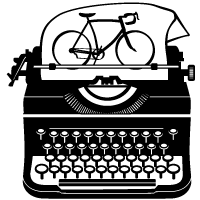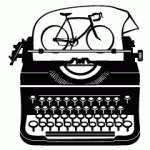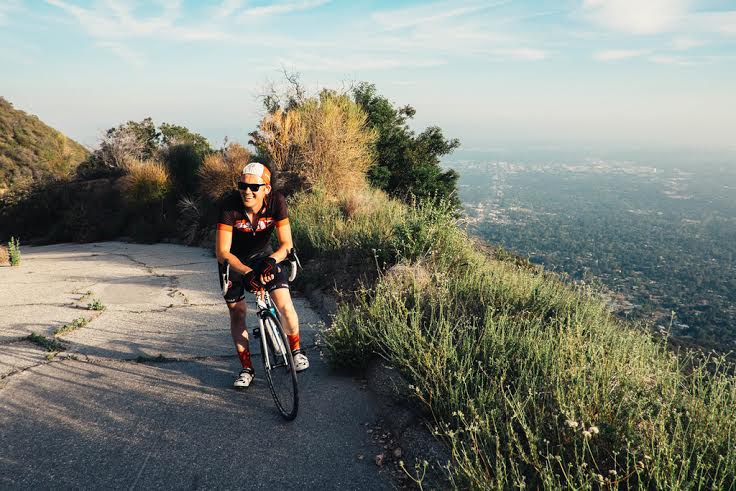
Andy Bokanev on a ride in LA. Photo by Kelly Nowels.
Lauding the Internet for breaking down the barriers between creators and their potential audience is so commonplace it’s cliche. But without that easy access to eager Instagrammers, tweeters, and bloggers, Andy Bokanev almost definitely would not have had his blazing fast rise from hobbyist photographer to professional. In the course of about a year he went from shooting local cyclocross to embedding with pro teams like Hagens Berman and Rapha Condor at major US races and working with big brands such as Specialized and Castelli. In a similar vein as his cycling photography contemporaries Emily Maye, Emiliano Granado, and Daniel Wakefield Pasley, Bokanev’s work centers as much on life around bike racing–the race prep, the mechanics, the bored hours whiled away at the crappy motel–as it does on the actual racing. I sat down with Bokanev in a loud pub in Seattle to talk about his foray into photography, his efforts to break into professional work, cycling’s attraction, his photography influences, his immigration to the US, and more.
How did you end up in Seattle?
I was born in Moscow, Russia. When I was 8 my family moved from Moscow to Washington, DC because my dad got work there. After a few years we moved to New York City and I basically grew up there. In 2007, me and my girlfriend at the time, wife now, moved from New York to Seattle.
How did you get into cycling?
There was a time I wasn’t interested any sports, really. But I started running a lot a few years back. Then I decided I should do some competitive running. Then like everyone else, it was like oh maybe I should do triathlons. I realized the cycling portion was much more enjoyable. It kind of rekindled something I had back in the day watching cycling on TV when I didn’t understand anything about it. Back in Russia there was cycling on TV and I had no idea what was happening, but it looked really awesome and challenging and fun.
It all kind of came to a head a couple of summers ago. We were in Bend, Oregon on vacation. It happened to be the same week the Cascade Cycling Classic was going on. It was really cool to have all the team cars in town and everyone in town was buzzing about the race. And because it was in July, every morning we’d go to breakfast and they’d have the Tour de France on TV. I was constantly surrounded by cycling and thought it was pretty cool. After that I just started absorbing as much as I could of cycling history, photography, random information and I haven’t stopped since. I’m not bored with it yet.
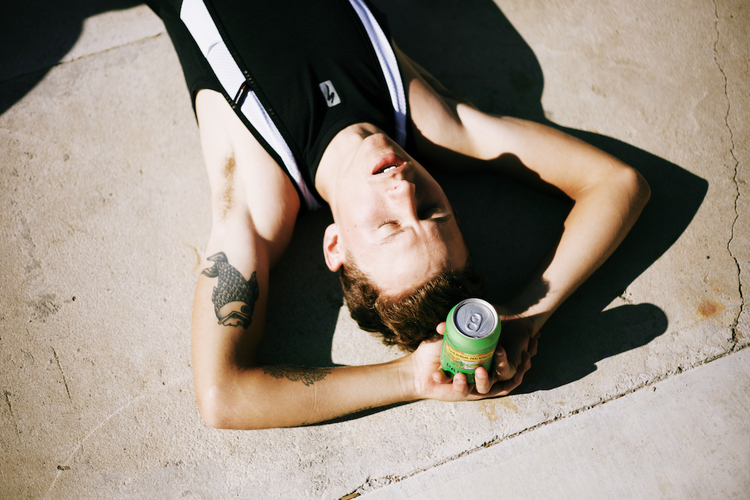
A shot from Andy Bokanev’s project with Specialized and Deux North. Photo by Andy Bokanev.
When did you get into photography?
It started when I moved to Seattle. I wanted to capture a lot of what was going on around me. I was doing a lot of outdoors stuff like climbing and surfing and what not. Photography has always been an extension of what I was doing and I’m into the documentary aspect of things. I was always interested in capturing the stuff that happens in addition when we were surfing or climbing. They call it lifestyle stuff. But it was the night before a climb, getting ready the night before we’d go surfing.
When I got into cycling it was natural that I’d really want to capture that part of cycling. When it comes to cycling photography–I follow a lot of blogs and read a lot about it–there are the photos that seem interesting, then there are the standard clean, crisp, focused photos. I know who won because I read the news, I don’t need to see the photo of who won. I always felt like there’s more that can be told. There’s so much more to the race than the race.
It seems like you have a pretty strong and consistent aesthetic in your work and a lot of it focuses on that story behind the scenes. What do you aim for in your photos?
Like I alluded to, there’s so much more that goes into the race than just the actual pedaling of the bike. Even for the riders themselves, there’s so much preparation, and so much hurry-up-and-wait mentality. Whether it’s filling up the bottles or cleaning the bikes or riders going through their routines. It’s fascinating watching the machine at work. People’s traditions in cycling fascinates me and I try to show that.
Then all of a sudden the race happens and that can be the most boring thing if you’re following the race. Nothing can happen for three to four hours. But there are moments punctuated by everything blowing up or shit falling apart. But either way, I try to capture the moment without trying to fake it.
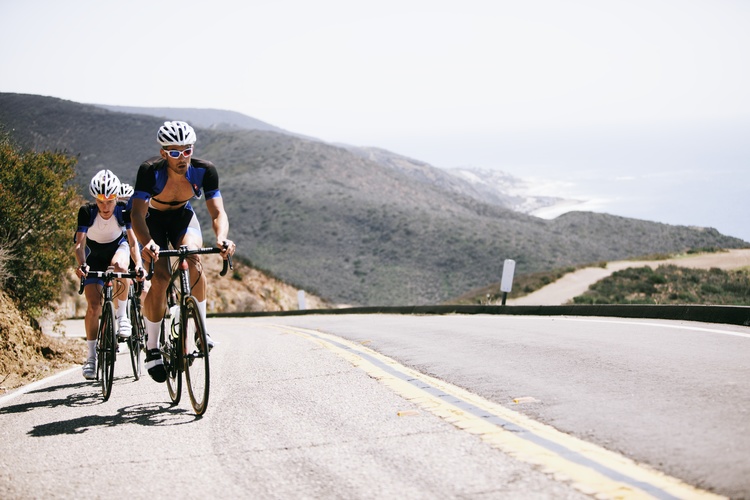
Hagens Berman U23 riders at training camp. Photo by Andy Bokanev.
Tell me about going pro as a photographer. How’d you get from shooting you and your buddies on climbing trips to working with big clients?
I wasn’t aware I went pro.
Oh, do you have a day job?
No, I don’t. Last October, photography became my main gig. I came to a crossroads in my career at that point. I was doing creative marketing type stuff. I have a baby. She just turned one. And me and my wife decided it was a good time for me to start pursuing my own thing and spend the rest of the time with my daughter. At that point, October and November last year, cycling was just kind of a little experiment I was going after. I was basically just documenting local cyclocross stuff that MFG and Cross Crusade and the folks down in Bend were doing.
That led me to thinking about the road season. I wanted to pursue my own road racing and, like I said, any time my mind gets wrapped around something, somehow photography gets integrated into that. I started looking around for road teams that would be interested in my particular style of photography and might want to take a photographer on. That’s how I found the Hagens Berman U23 team. It had existed for a few years in different iterations, but this was their first year as a true U23 outfit. I got in touch with Todd Herriott and David Richter who run Herriott Sports Performance (HSP) and it worked out. I’ve been working with the team since training camp in California in March and we’re going to go to the last NRC race of the season in Philly in September.
That’s been the main story I’ve been working on all season. I’ve worked for other teams and gone to other races where Hagens wasn’t there. But that’s been the one thing I keep coming back to. I’ve really enjoyed working with the development team for the fact that you have really young riders with really interesting stories to tell. All of them are there because they’re super talented. But you definitely can see there are guys that are super into it and don’t have a plan B. Then there are guys who are going to go to college next year. That’s been an interesting thing to document. And the growth of the team has been incredible. They’ve come so far from March to just a few months later doing big pro-level races with some of the best riders in the country.
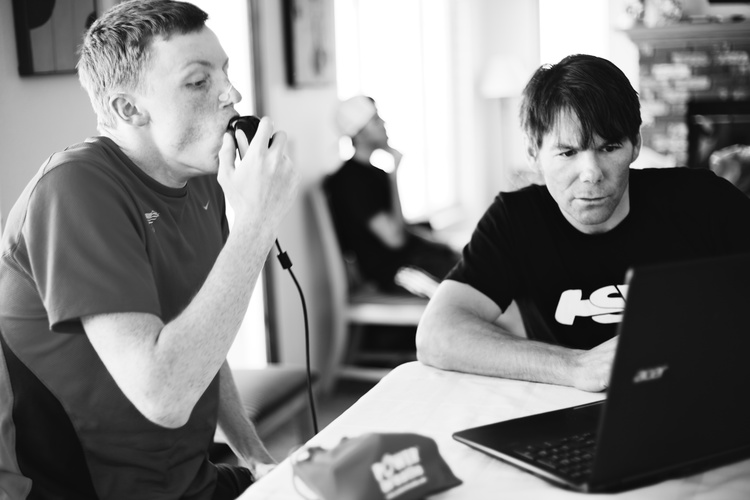
A Hagens Berman U23 getting tested. Photo by Andy Bokanev.
What photographers do you admire or look to for inspiration, either inside or outside of cycling?
One of the most inspirational photographers for me is Chris Burkard. He’s a surf photographer. I really enjoy his style. It’s beautiful photography, but it’s not just about the photos he produces. It’s about the lifestyle. He’s also a dad–I think he has two kids now–and he travels a bunch. But he basically goes to all parts of the world and captures these beautiful moments in surfing that are not all about that perfect surf photo like you see on covers of magazine. It’s about how it feels and about the lifestyle aspect of it.
As far as cycling photography’s concerned there’s a lot of cool stuff happening. Photography’s getting a lot better in cycling. You can look back at 1940s, 1950s photos and it’s really rad. Then there was a period of time when all the photos just looked really stale and calculated. I’m a big fan of the stuff Emily Maye does. I’m a big fan of Jared Gruber as well.
For me, the most inspirational stuff is someone who can be a participant in whatever it is they’re photographing and give the insider view. It’s important to understand what you’re shooting. It’s part of the reason I like Burkard’s work. I also really like Ed Tempelton who’s a skate photographer. I never was a skater and never lived that lifestyle, but his photography is amazing. It’s very raw and you feel like you’re there. You feel exactly what’s going on.
Are you doing other commercial work? Have you gotten your feet into the bike industry?
I’ve done some commercial work. One of my bigger projects this year was working with Specialized and Deux North for a new bike release. There’s a couple of other projects I’m talking to some companies about right now. I’ve been approached by Specialized and others because they’re looking for a particular feel of photography. The word that was always the common denominator was “not polished.” And I can live with that. *Laughs*
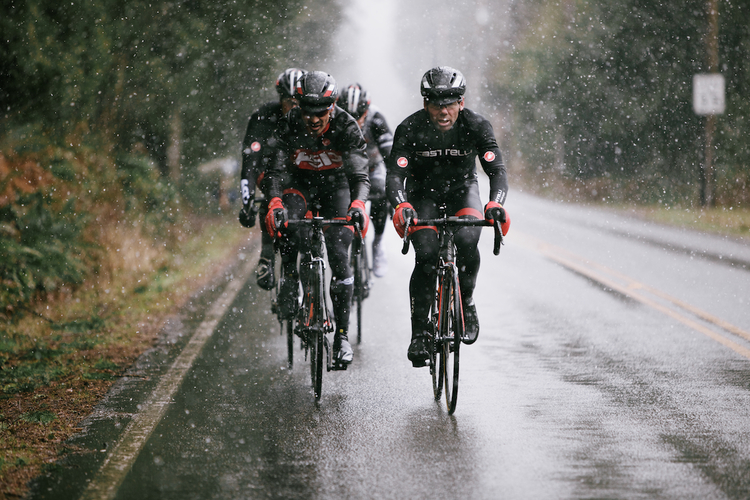
HSP riders on Seattle’s Rocket Ride. Photo by Andy Bokanev.
How do you feel about the balance of personal work and commercial work?
I think commercial work is good as along as it’s something that’s interesting to me. And on the opposite end of that, it somehow helps the company with what they’re after. If i’m not interested in something, I can’t really fake it. I mean, maybe I could, but I wouldn’t be passionate about it and I think it might show in the work. Whenever I’ve been approached it’s been really cool because the companies get it. They get what I do and understand the style and not-polished aspect of it.
It’s been a really good experience. This is my first year of doing this full time so it’s been rewarding so far.
Where do you want to take your career from here?
I just want to see where it goes. Before cycling I was doing adventure photography and fashion photography and I still want to do that kind of work. As far as cycling is concerned I’ve been working a lot on the US circuit this year. The last couple of weeks I worked in Colorado and Utah with an Australian Team Drapac. And last week I was with Rapha Condor JLT. That was really cool to see the bigger teams and races. Traveling with Hagens Berman I got to see a lot of local races and smaller US teams. Then all of a sudden in Colorado you see guys like Rafal Majka who happens to be the KOM Jersey winner from Tour de France.
I think my goal for next year is to continue growing and get to Europe. My plan for the spring is to go to a couple of the classics. I don’t have a specifics of how I’m going to do that or who I’m going to work with yet. But sometimes when I don’t have a plan it works out the best.
Like what you read on The Bicycle Story? Support the work with a donation or by buying a shirt.
